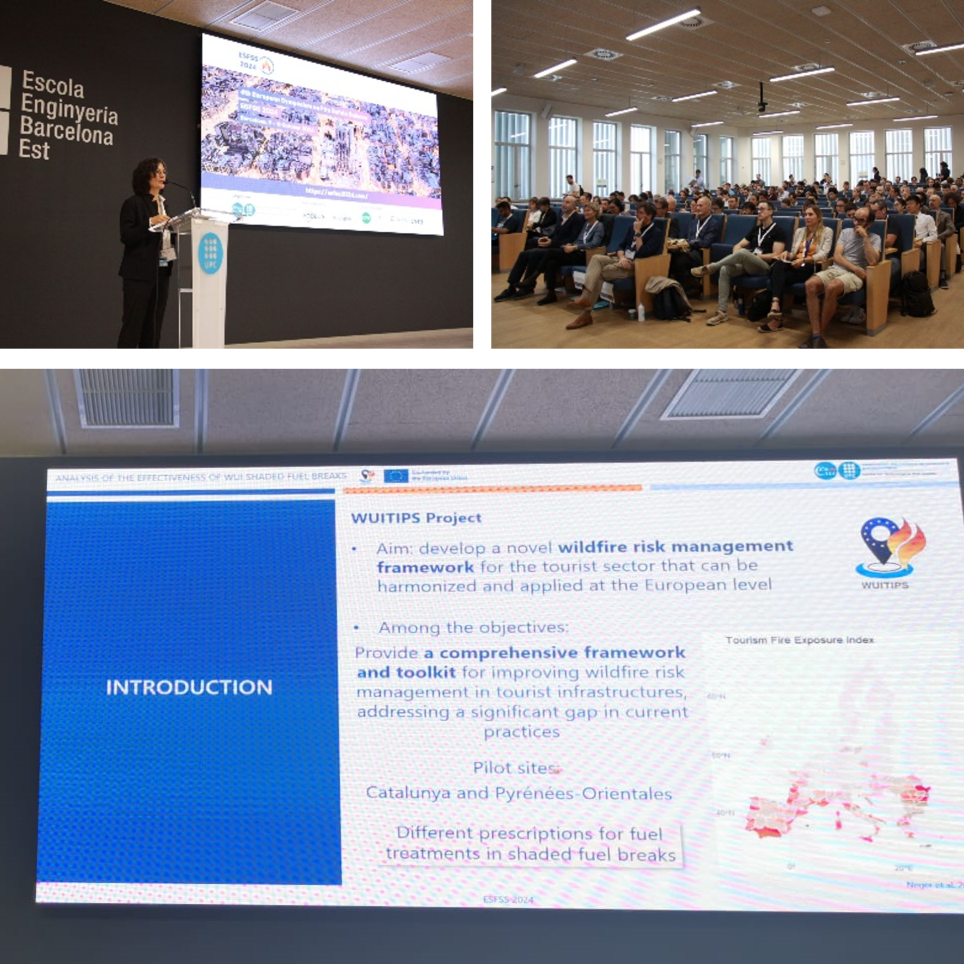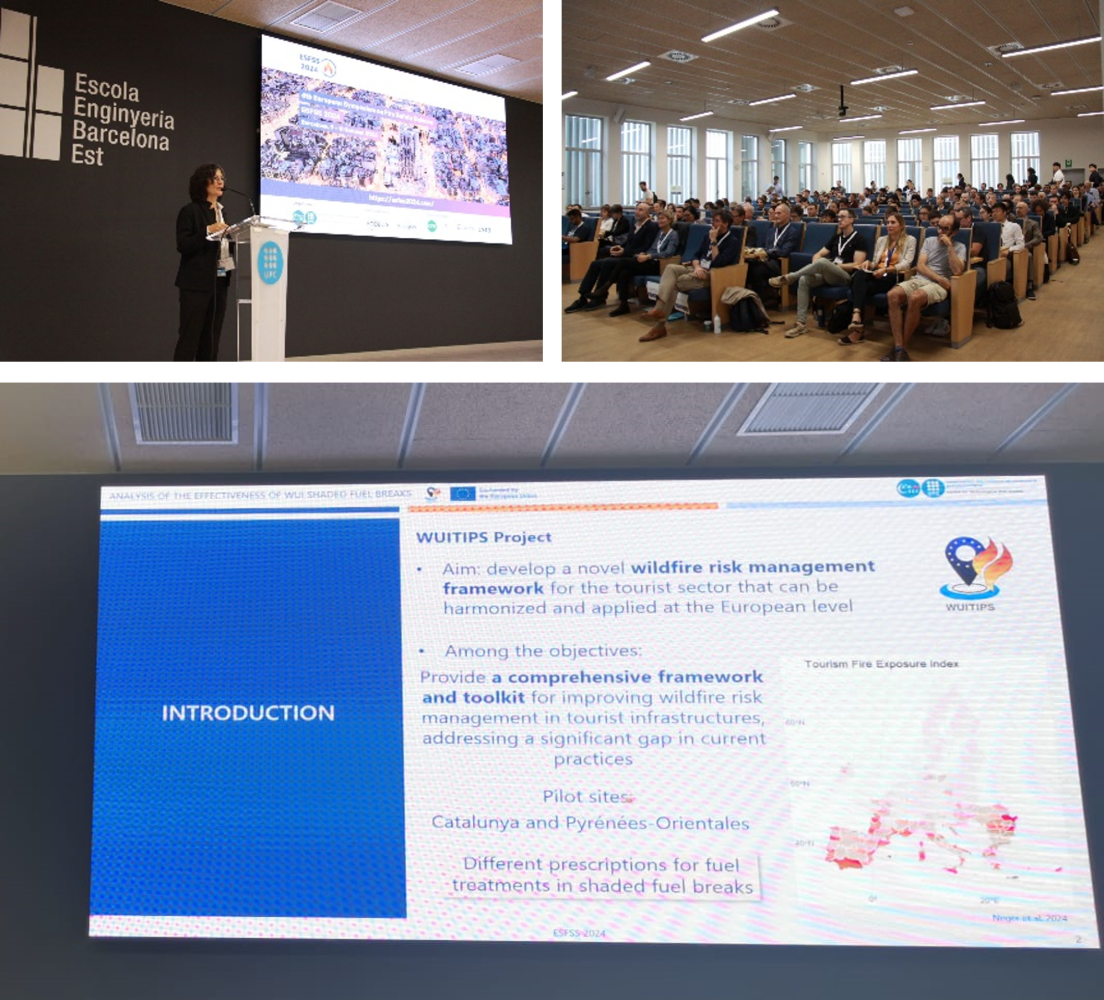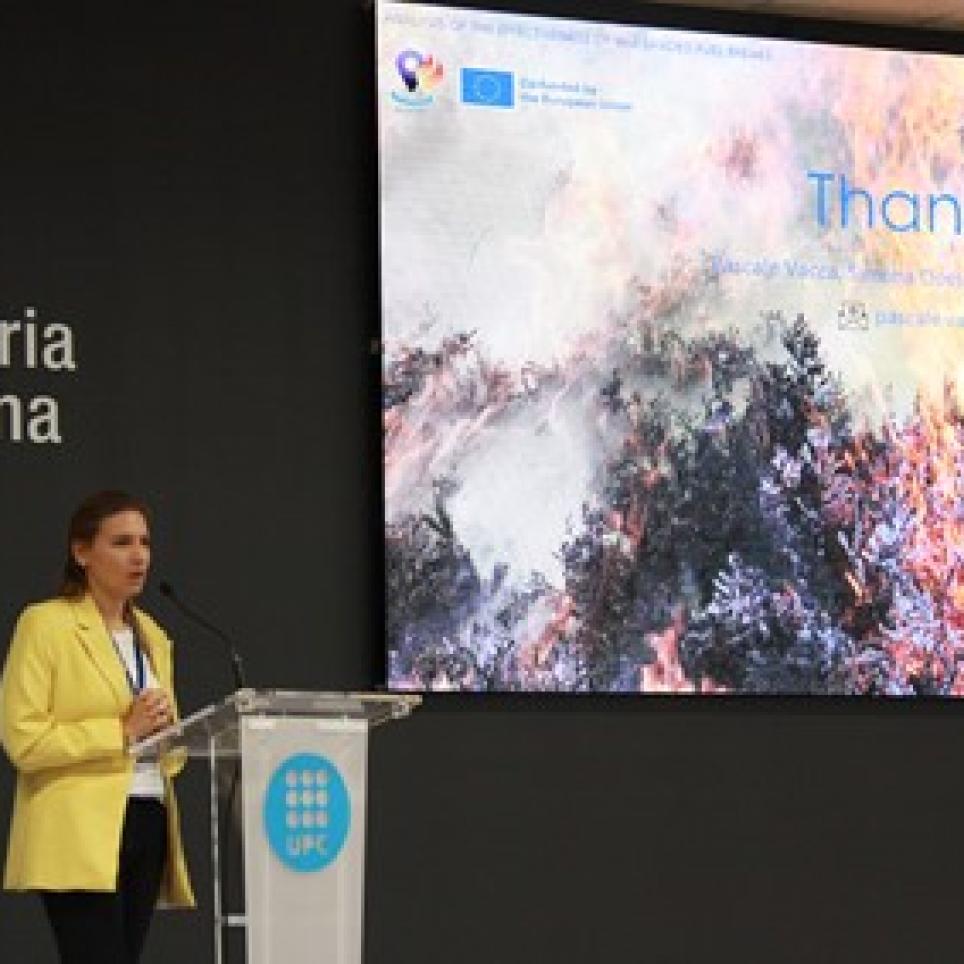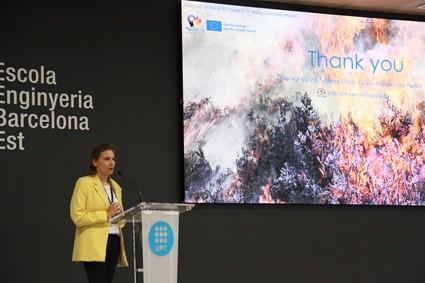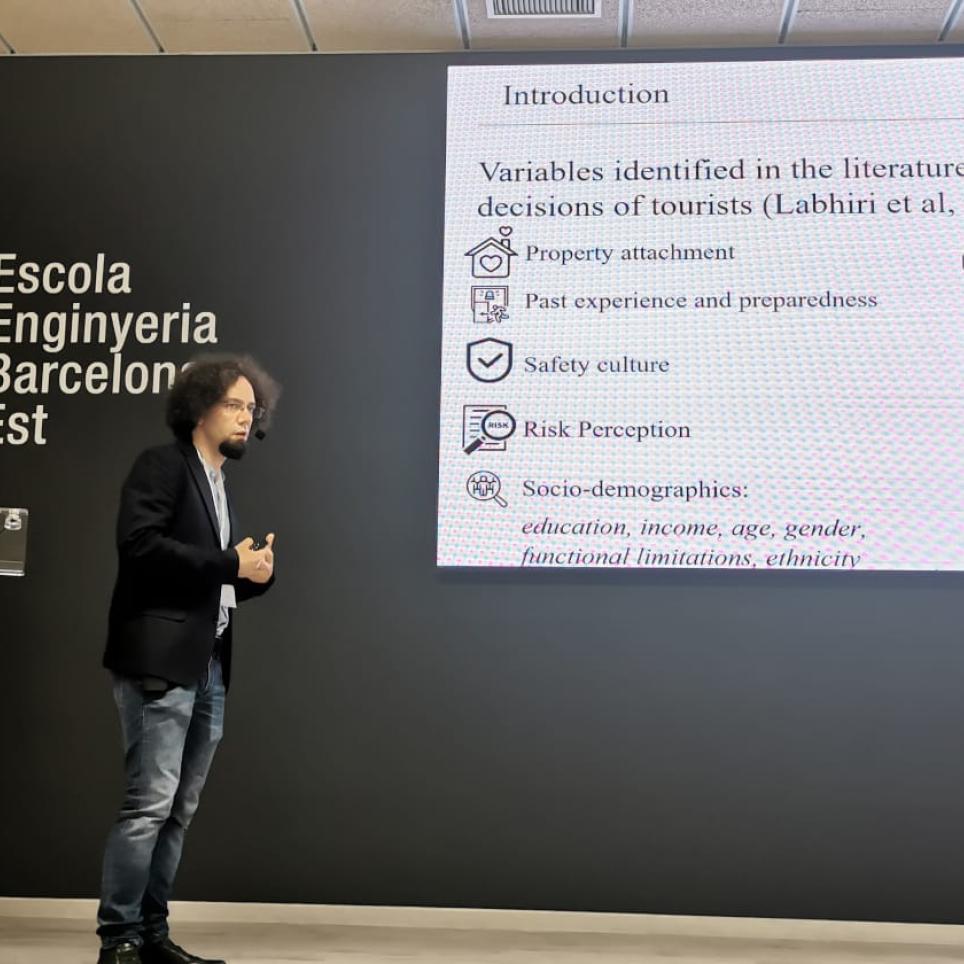Managing wildfire risk in tourist areas remains a key challenge in wildland-urban interface (WUI) research. Despite ongoing efforts, many issues still need to be addressed. Topics like effective risk mitigation measures for tourist infrastructures, raising risk awareness among visitors, and improving evacuation planning and management are being actively researched by WUITIPS. Their pilot site spans the cross-border wildfire-prone coastal zone of Cap de Creus (Spain) and Roussillon (France).
Every summer, wildfires pose serious threats to tourist areas, endangering civil protection and complicating fire suppression efforts. Recent incidents include the Colera-Portbou fire (Alt Empordà, Spain), where 1,000 tourists were confined to a campsite, and main roads and train lines were shut down during the fire. Across the border in Roussillon, last August 2024, at least 11 people were injured, and 3,000 vacationers were evacuated from a campsite in Canet-en-Roussillon due to a wildfire.
Teams from UPC and ULUND presented their work on structural and human vulnerabilities in tourist regions exposed to wildfire risk as part of the WUITIPS project. Their presentation was delivered to an audience of 200 attendees at the 4th European Symposium on Fire Safety Science in Barcelona. This annual event, sponsored by leading fire safety companies and supported by the International Association of Fire Safety Science, brings together researchers from around the world to discuss fire safety across various environments, including wildfires and wildland-urban interface fires.
At the event, Dr. Pascale Vacca, technical coordinator of the WUITIPS project at UPC, presented findings from a comparative study on effectiveness of preventive infrastructure using Computational Fluid Dynamics (CFD) simulations, performed with the well-known Fire Dynamics Simulator (FDS) tool. The study focused on shaded fuel break infrastructures along both sides of the Catalan-French border. Despite having similar fire regimes and settlement characteristics, the required preventive measures differ across the border. The research suggests that Roussillon's design, with a 50-meter width and higher tree density, is more effective than the Catalan approach, which has a 25-meter width and lower tree density.
On the other side, Dr. Enrico Ronchi presented the WUITIPS project’s research on human protection during wildfires, focusing on tourists vulnerability. Tourists are often unfamiliar with the local geography, escape routes, and emergency procedures, which hinders quick decision-making during evacuations. Language barriers and a lack of awareness about fire risks further complicate their response.
To address these challenges, Dr. Ronchi highlighted the development of an app designed to assess tourist vulnerability at municipality level. Based on stakeholder perspectives, the app identifies key factors influencing evacuation decisions, such as timely information and trust in local authorities. This tool aims to enhance evacuation planning for tourists in wildfire-prone areas.

